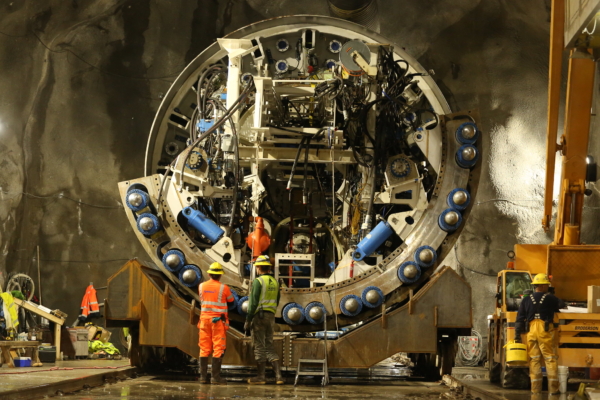New York City Mayor Adams and the New York City Department of Environmental Protection (DEP) have announced the start of the final phase of the $2 billion Delaware Aqueduct repair project. This project, planned and prepared for decades, aims to prevent leaks of approximately 35 million gallons of drinking water per day in upstream New York State. The restoration will ensure that the world’s longest tunnel, the Delaware Aqueduct, can continue to provide clean and safe drinking water for the city’s residents.
In the past 11 years, New York City has constructed a 2.5-mile bypass tunnel to circumvent a major leak near Newburgh and has repaired another leak in Ulster County.
This restoration will connect the two ends of the bypass tunnel and seal the problematic section in the main tunnel.
Mayor Adams stated that the forthcoming final phase of the 11-year plan aims to secure future water supply. In order to address the 35 million gallon daily leakage issue of the Delaware Aqueduct, New York City has constructed a 2.5-mile bypass tunnel, which will be connected to the main conduit over the next few months. This is part of the largest restoration project in the history of the DEP.
DEP Commissioner Rohit Aggarwala mentioned that during the repairs, the city will utilize alternative water sources such as the Croton Reservoir System. Some residents may notice a slight difference in taste or odor of tap water, but it remains clean and safe for consumption.
The repair project involves upgrading multiple reservoirs to ensure water supply remains intact.
Upon completion of the repairs, the leakage problem in the tunnel will be resolved, preventing the daily leakage of 35 million gallons of water, ensuring that future generations of New Yorkers can continue to enjoy high-quality drinking water. While some residents may experience minor changes in water taste in the short term, the overall project will enhance the reliability of the city’s water supply system.
The DEP is responsible for managing New York City’s water supply, providing approximately 1.1 billion gallons of quality drinking water daily to nearly 10 million residents, including 8.3 million city residents. Water is transported from watersheds over 125 miles away from the city, comprising 19 reservoirs and 3 controlled lakes. Approximately 7,000 miles of pipes, tunnels, and aqueducts supply households and businesses in five boroughs.
The 85-mile Delaware Aqueduct transports around 600 million gallons of water per day from reservoirs in four Catskill Mountain areas. The water flows from the Rondout Reservoir in Ulster County to the West Branch Reservoir in Putnam County, passing through the Kensico Reservoir in Westchester County before reaching the Hillview Reservoir in Yonkers and entering the city’s water supply system. The tunnel, inaugurated in 1944, is the longest of its kind in the world.
In 2010, New York City initiated a $2 billion restoration project that included the construction of a 2.5-mile bypass tunnel to circumvent leaks discovered in Newburgh in the 1990s and to repair another leak in Ulster County. The new tunnel is situated 600 feet below the Hudson River, marking the first tunnel constructed below the river since 1957.
Since 1992, the New York City Department of Environmental Protection has been monitoring these leaks, with a daily outflow of up to 35 million gallons of water. Most leaks occur near Newburgh, and the DEP collaborates with local authorities and the United States Geological Survey to continuously monitor groundwater levels in affected communities.

